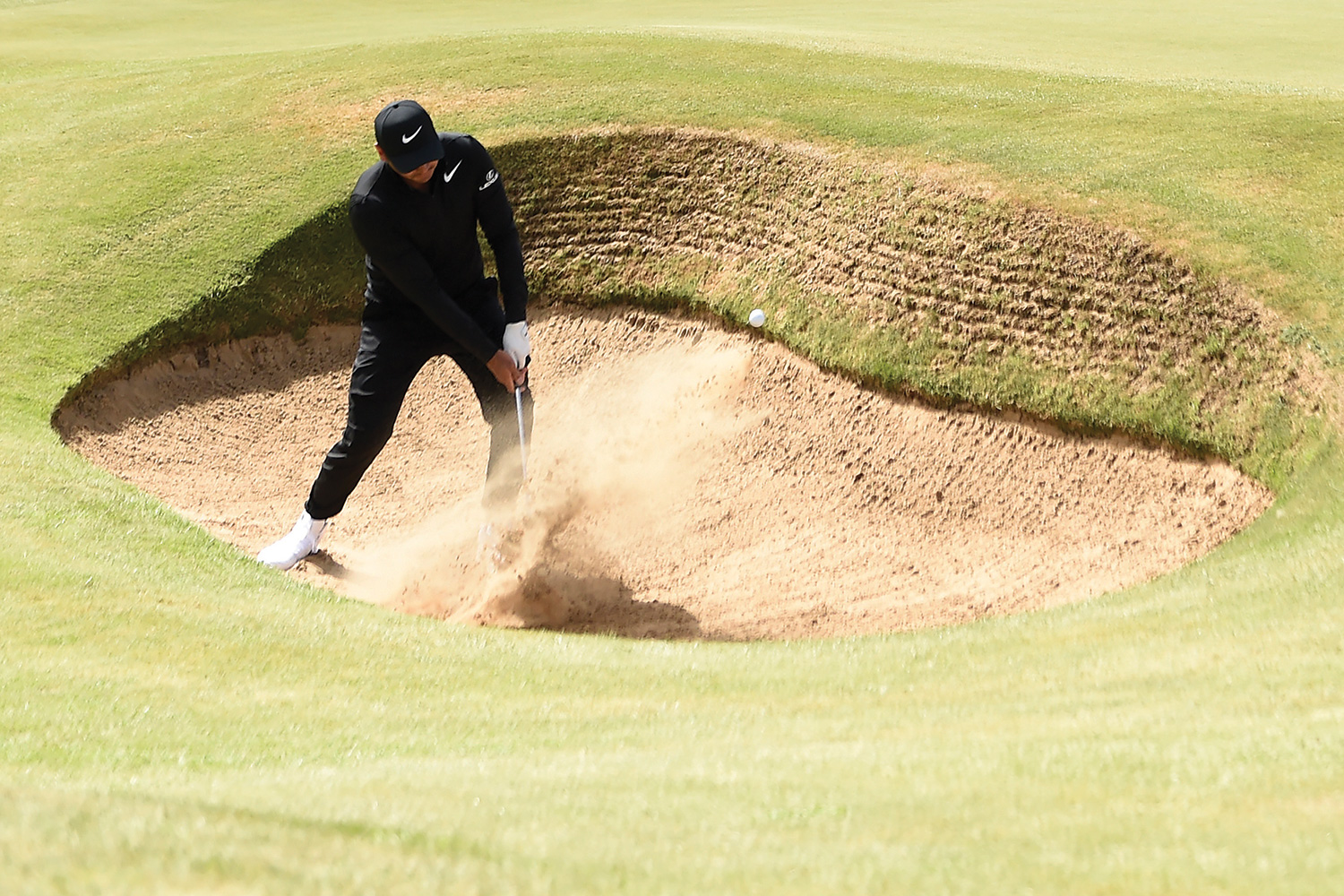Do I think Jason Day can win the British Open at Carnoustie? Absolutely I think he can.
His game is tailor-made for it. Jason is the best chipper and putter on the planet. He can hit the ball low when he wants to and he’s not afraid to use the driving iron and get the ball on the ground running.
Although he plays most of his golf in the US, Jason’s game is so adaptable to any tournament and any conditions.
But like all top players, it requires thorough preparation to get his game in the particular shape it needs to be to compete at the highest level. Obviously, that is no truer than the lead-up to the British Open, where courses and conditions can throw up so many variables to deal with.
Let me take you through some of the things I have been working on with Jason for this year’s Open, and see if it can help you deal with unfamiliar territory in your game. >>>
Iron Deficiency
This year, Jason and I will be working on improving his iron play for The Open.
 He has won twice on the US PGA Tour this year on the back of ranking first in Strokes Gained Putting, third around the greens and 20th off the tee.
He has won twice on the US PGA Tour this year on the back of ranking first in Strokes Gained Putting, third around the greens and 20th off the tee.
However, his iron play has not been at its best. For strokes gained in approach play, Jason ranks 175th on tour. I don’t think that has a whole lot to do with the swing, instead I think it may be an issue of committing to each shot.
Leading up to Carnoustie, we will talk about commitment over the ball and making sure he feels comfortable with the shot at hand.
We will also try to dial his new irons (he uses the TaylorMade P790 3-iron and P730 blades from 4-iron to pitching wedge) and he seems happy with them. I saw a small uptick in greens in regulation and proximity to the hole at the Players Championship, where he tied fifth.
I think things are on the improve, but we have to work diligently on committing to the shot.
How Do You Improve Your Iron Play?
As a coach, it’s vital for me to assess what’s wrong with a player’s iron play. Are the misses left and right, or short or long?
There’s an old joke that left and right is always the coach’s problem, but long and short is the caddie’s problem (when I was carrying Jason’s bag they were inevitably both my problems!).
The most important thing in any assessment is, what is actually the problem? Why are you missing the greens with pitching wedge, 9-iron and 8-iron when your 5 through 3-iron are above average? You have to successfully identify the source of the problem before you can work on improving it. To do that, get a lesson from your local PGA pro to find out what your miss is, and you’ll do your scorecard and handicap wonders.
Remember, golf is a game of misses.
Right Shot, Right Time
We’ll also work on hitting the stinger with the 2-iron; he’s had that going in the past and I think it will be particularly handy this year at Carnoustie.
Lag putting will also be crucial with bigger greens and conditions that can be extremely windy.
Finally, Jason might be No.1 on the US PGA Tour in sand saves – getting up and down from bunkers 68.18 per cent of the time, but the British Open is a different beast. To help with his training, Jason has built a British Open (pot-style) bunker in his backyard, so we will focus on tight bunker shots with funky lies.
– written with Evin Priest
Get control over your wedges like Jason Day
Use a mirror to check for stability.
By Matthew Rudy
 As much heat as Jason Day generates with his driver (ranked 10th on the US PGA Tour in Total Driving), and as many putts as he sinks from seemingly any distance (leads tour in Strokes Gained Putting with 1.190), it is his wedge control that stands out as a particular strength. And you don’t have to swing at 200 kilometres per hour to incorporate some of what Day does into your game.
As much heat as Jason Day generates with his driver (ranked 10th on the US PGA Tour in Total Driving), and as many putts as he sinks from seemingly any distance (leads tour in Strokes Gained Putting with 1.190), it is his wedge control that stands out as a particular strength. And you don’t have to swing at 200 kilometres per hour to incorporate some of what Day does into your game.
“The key to his accuracy with wedges is his ability to keep his lower body very quiet on the backswing and downswing,” says top California teacher Tom Rezendes, who is based at the NorCal Golf Academy. “The flaw I see in many players is making way too much weight shift on the backswing, and a lead shoulder that ends up being way too high in the early part of the downswing.”
The next time you practise, keep the driver in the bag and spend some time with your more delicate clubs, says Rezendes.
“To work on it, hit wedge shots feeling very stable on the backswing – favouring your lead side – and on the downswing work on keeping your lead shoulder low and rotating to the left. You can practise in front of a mirror as well, checking that your lead shoulder is lower than or even to your trail shoulder.”
• Jason Day is ranked 7th on the US PGA Tour in Approaches From 50-75 yards, leaving it 16.750 feet on average from the hole.




